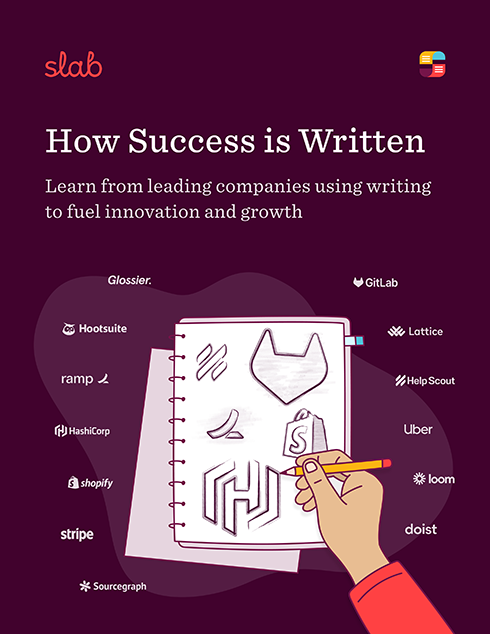The beauty of well-written knowledge sharing
At Glossier, effective engineering and writing culture work together to create a stunningly-executed business strategy
Glossier was founded on the concept of simple, direct communication. The beauty brand was built on a culture of writing. Before Glossier, there was Into the Gloss, co-founder Emily Weiss’s blog that put a spotlight on beauty routines that had previously been a more personal experience. In the years since, the company has used its knack for communication to grow from a cult favorite to a household name. Sharing knowledge through writing has been key to the growth of Glossier. Today, a strong writing culture can be seen in the way the company has matured, how online product features are developed and shipped, and how the company is framing its future.
Without documentation, growth led to growing pains
Like many startups, Glossier went through an early growth phase that prioritized experimentation over documentation. But as the company grew, they started to see how writing was necessary for their next stage of growth.
“We would look back at decisions made by different teammates six months or a year ago and wonder why we did that, wishing we had more context.”
Because there was a lack of internal documentation, Aaron and the other engineers working on Glossier’s website would have to recreate decisions without the context they needed. Additionally, as Glossier’s site engineers took on more complicated projects, they needed many stakeholders on different teams to have a shared understanding of what the team was doing and why. “It’s very hard to do that through many one-on-one meetings. A shared document scales better," says Aaron.
Glossier’s strategy has shifted from one of discovery to one of supported and informed growth. Aaron has relied on writing as a means to share that context and continue to facilitate decision-making that will allow Glossier to scale.
“The entire organization benefits when we give people the skills and context to operate independently without interrupting someone else's day.”
On a tactical level, this takes many forms. “I’m always looking to have any important decisions, and the context around those decisions, captured in a durable, preferably public, way,” he shares. That could mean adding comments to a ticket within Glossier’s ticketing system, creating and updating Slab documents, or moving a direct conversation within Slack to a public channel to make it discoverable to others.
An example of how Glossier's engineering team has embraced writing to empower autonomy was when they switched from one AWS account to several. The change added another step of having to juggle different accounts, and one engineer was being asked how to do this regularly, so he decided to write it down. Every engineer they’ve hired since has gone through that document, and now new engineers have all the rich context on the decision, without asking. “It proved to us that highly-leveraged writing can fade into the background of people’s work and end up being something they don’t have to worry about anymore,” says Aaron.
Writing: the backbone of Glossier’s product development
The world of engineering has always been big on documentation. Modern software engineers are so used to source control, where every change is documented. “We’re always writing about who changed what and why. But it can be difficult to start applying that to other areas of your work,” explains Aaron. Being intentional about building those frameworks has been important, and writing now complements a number of steps in the product development process.
The product development process starts with a Press Release FAQ (PRFAQ), a document that imagines that the product has been launched, and how customers have responded to it. The PRFAQ helps the team see the vision and understand the impact. From there, the engineering team begins documenting what needs to be built and by when, outlining which departments and deliverables will help the feature succeed. “As we’re doing this, engineers start making estimates, researching vendors, and making prototypes. It’s a cone of uncertainty that narrows as the product is built.” As the business and product requirements for a given product come into sharper focus, they also inform design decisions.
“Written documentation facilitates much more effective discussions about making product and delivery tradeoffs.”
The engineering team uses a growing collection of Slab templates to achieve all this, from roadmaps to agendas for recurring meetings, brainstorming documents, business and engineering requirements documents, and the like. Glossier’s writing culture, built into each step of the product development process, helps facilitate rigorous, clear thinking. “Assumptions, risks, potential challenges on the horizon, and the size of the opportunity we’re pursuing become much clearer through writing,” Aaron admits. “It turns each unknown into something concrete.”
Writing Glossier's future
Writing is how Glossier shares its vision for the future and the tactics that will help them get there. “In order to get people bought into a vision, any compelling leader has to be able to do both the heart pitch and the brain pitch. It's easy to get excited about a vision, but it's just as easy to gloss over the logical things that tie that strategy together. Sharing a written strategy lets you get the best of both worlds.” Aaron explains.
As Glossier grows, they will continue to iterate on their internal documents, templates, and writing practices too. “We’re at a place where we don’t have to reinvent the wheel every time,” Aaron says. When a new challenge arises, Glossier will work their way through it with writing.

